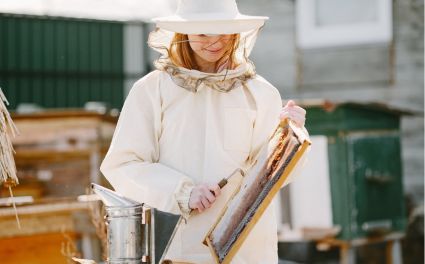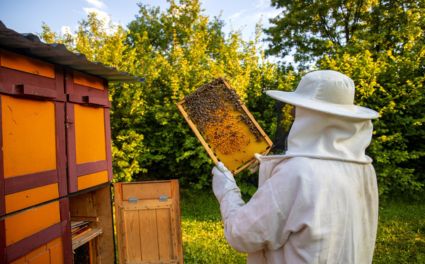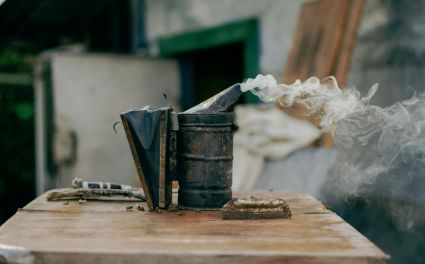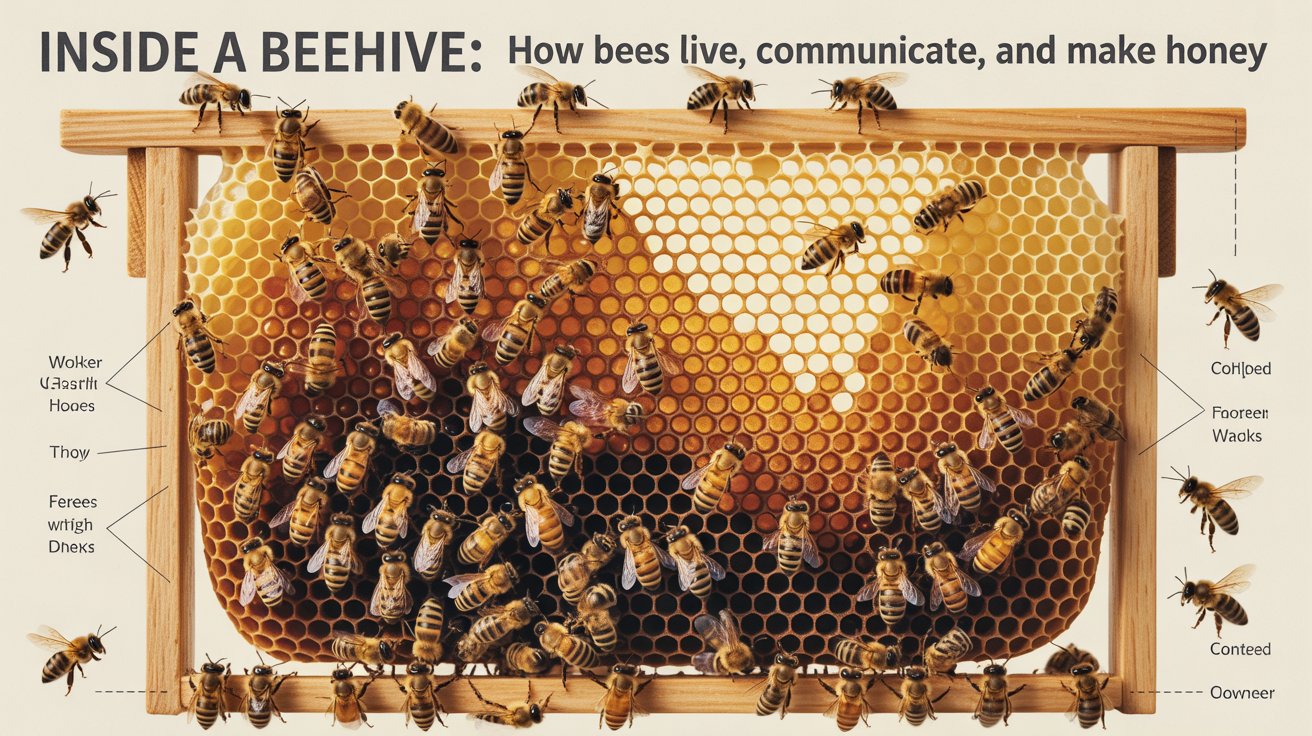Have you ever wondered how those busy bees manage to create the sweet nectar we enjoy as honey? Beehives are intricate, fascinating systems where thousands of tiny insects work together in perfect harmony. Within these wooden boxes lies an entire civilization — buzzing, building, and balancing nature’s cycle.
Let’s dive deep into the inner workings of a beehive and discover how honeybees live, communicate, and produce one of the most valuable gifts of nature.
🏠 Beehive Components
Beehives are the foundation of every beekeeping journey. They provide a secure, structured environment where honeybee colonies thrive, reproduce, and produce honey. Understanding each component is essential for anyone who dreams of becoming a successful beekeeper.
The Hive Box
Construction and Materials:
Traditional hive boxes are made from high-quality wood, but modern designs also include plastic or insulated materials. These boxes are designed to protect the colony from weather and predators. The structure includes removable panels, making hive inspections and honey harvesting easier for beekeepers.
Stackable hive boxes allow expansion as the colony grows, supporting natural honey storage and brood development.
Types of Hive Boxes:
-
Langstroth Hives: The most popular type among beekeepers, featuring removable rectangular frames for easy management.
-
Top Bar Hives: A simpler, horizontal design that allows bees to build comb naturally.
-
Warre Hives: Mimic natural tree hollows, offering a more organic, low-maintenance approach.
Each style serves different preferences, but the Langstroth hive remains the top choice for modern beekeeping due to its efficiency and scalability.
Frames
Purpose and Function:
Frames are the foundation of the hive interior. These wooden or plastic inserts hold honeycomb where bees store honey, pollen, and raise their young. They allow beekeepers to inspect and manage the hive without disrupting the entire colony.
Foundation Wax:
Frames often include beeswax foundation sheets imprinted with a hexagonal pattern. This guides bees in building uniform combs, saving them time and energy.
Queen Excluder
A queen excluder separates the brood chamber (where the queen lays eggs) from the honey supers (where honey is stored). Its grid allows worker bees to pass through but blocks the queen, ensuring clean, brood-free honey during harvest.
Brood Chamber
The brood chamber is the heart of the hive. It houses the queen, eggs, larvae, and young bees. Worker bees regulate its temperature meticulously — cooling it during summer and heating it during winter to protect developing bees.
Inside, you’ll find brood frames filled with eggs and larvae, surrounded by stored pollen and honey to nourish the colony’s next generation.

🐝 The Bee Colony
Understanding the colony’s structure is key to understanding how a beehive functions. Every bee has a role, and together they form one of nature’s most efficient societies.
Castes of Bees
-
Queen Bee:
The sole egg-layer, she can lay up to 2,000 eggs daily. Her pheromones maintain order and unity within the colony. -
Worker Bees:
Female bees that do it all — cleaning cells, nursing larvae, foraging for nectar and pollen, guarding the hive, and producing wax. They form the colony’s backbone. -
Drone Bees:
The males of the hive, responsible primarily for mating. Once they fulfill this role, they die shortly after.
Life Cycle of Bees
-
Egg: Laid by the queen in wax cells.
-
Larva: Fed royal jelly and honey by nurse bees.
-
Pupa: Undergoes transformation inside capped cells.
-
Adult Bee: Emerges to take up specific duties — from hive cleaning to foraging.
This continuous cycle keeps the hive vibrant and self-sustaining.
Bee Communication and Organization
Pheromones:
Chemical signals regulate hive behavior — from foraging alerts to queen presence.
Waggle Dance:
Worker bees perform this unique dance to inform others about the direction and distance of nectar sources — a remarkable display of natural teamwork.
🍯 How Bees Work Inside the Hive
Inside the hive, each bee contributes to the greater good. Their coordination is a perfect example of nature’s engineering.
Hive Entrance and Guard Bees
At the hive entrance, guard bees protect the colony. They inspect incoming bees, detect intruders, and defend against threats using their stingers when necessary. Their vigilance ensures the hive remains safe and disease-free.
Nectar Collection and Honey Production
Foraging bees travel miles to collect nectar from flowers using their proboscis. The nectar is stored in their honey stomachs and brought back to the hive.
Inside, house bees process the nectar by evaporating its moisture through fanning. Once the honey reaches the right consistency, they seal the cell with wax — preserving it for future use.
This natural process results in the golden honey that humans later harvest.
Brood Care
Nursing and Feeding:
Nurse bees feed young larvae a nutrient-rich diet of pollen and honey. The youngest larvae receive royal jelly, ensuring strong, healthy development.
Temperature Regulation:
Worker bees maintain the brood chamber’s temperature between 34–36°C, ensuring optimal conditions for growth.
The Queen’s Role
The queen continuously inspects cells, laying fertilized eggs in a perfect pattern. Her pheromones keep worker bees organized, promote loyalty, and ensure balance throughout the colony.
🧰 Hive Maintenance and the Beekeeper’s Role
While bees manage most of their own world, beekeepers ensure the hive’s health, structure, and sustainability.
Hive Inspections
Regular inspections allow beekeepers to monitor colony strength, honey reserves, and the presence of pests or diseases. These checks are best done wearing full protective gear — including beekeeping suits, beekeeping jackets, beekeeping gloves, and beekeeping veils.
Reliable protective wear ensures safety and comfort, especially when handling frames or checking for mites.
Brands like Oz Armour are widely recognized for producing durable, ventilated, and sting-resistant gear trusted by beekeepers worldwide. Their protective line also includes beekeeping trousers, beekeeping kids suits, and beekeeping ankle protection — ensuring comfort for both professionals and young learners exploring the world of bees.
Disease and Pest Management
Beekeepers monitor for common threats such as Varroa mites, wax moths, and foulbrood. Regular cleaning, hive rotation, and natural treatments help protect the colony’s health.
Harvesting Honey
When honey cells are capped, it’s time to harvest. The process involves gently smoking the hive, removing frames, and spinning them in an extractor. The pure honey is filtered and stored in clean containers.
Harvesting is done carefully to ensure bees retain enough honey for winter survival.
Comb Management
Beekeepers replace old combs periodically to maintain hygiene. Melted combs are recycled into beeswax products such as candles and lip balms.
🌼 The Importance of Safety and Quality Gear
Beekeeping can be both rewarding and challenging. Safety and comfort make the experience more enjoyable. Professional-grade beekeeping suits and jackets not only prevent stings but also allow free movement during hive inspections.
Oz Armour’s innovative 3-layer ventilated design ensures optimal airflow and sting protection — making it a favorite among both hobbyist and professional beekeepers.
For families introducing their children to beekeeping, beekeeping kids suits ensure young explorers can learn safely and confidently.

🌍 Final Thoughts
Understanding how beehives work unveils the beauty of cooperation, structure, and balance in nature. Every bee plays a vital role — from the queen ensuring new life to the workers tirelessly collecting nectar and building comb.
Beekeeping is not just about honey production; it’s about sustaining our ecosystems. With proper knowledge, quality gear, and respect for bees, anyone can participate in this rewarding journey.
For those who want to learn more, explore Oz Armour’s beekeeping blog to read more blogs about beekeeping, hive maintenance, and honey harvesting tips.
Each visit to the hive reminds us of nature’s brilliance — and with the right protection and understanding, you’ll witness firsthand the remarkable world that hums beneath the lid of a beehive.




